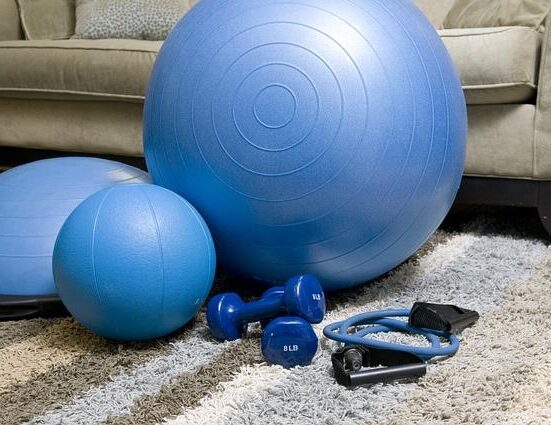In the dynamic landscape of home fitness, where convenience meets innovation, resistance bands have emerged as a versatile ally for strength training enthusiasts. Gone are the days when bulky gym equipment dictated the rhythm of your workout. Today, a simple band can provide an effective and efficient way to build muscle, enhance flexibility, and improve overall fitness—all from the comfort of your own home. Whether you’re a seasoned athlete or just beginning your fitness journey, the right resistance bands can make all the difference. In this article, we will explore the best resistance bands available, examining their features, benefits, and how they can elevate your strength training routine. Join us as we uncover the tools that can help you stretch your limits and redefine your home workouts.
Choosing the Right Resistance Band for Your Fitness Goals
When it comes to selecting the perfect resistance band, understanding your fitness goals is essential for maximizing your home strength training. Resistance bands come in various types, materials, and resistance levels. Tube bands are often favored for their versatility and ease of use, while flat bands are great for glute exercises and increasing mobility. Additionally, there are options like mini bands, which can be very effective for targeted lower body workouts. Consider the following factors:
- Resistance Level: Choose bands that challenge your muscles without compromising form.
- Material: Opt for latex for durability, or fabric for comfort during longer workouts.
- Length: Ensure the band length suits your height to prevent excessive tension on joints.
If you’re just starting out, a set of varying resistance levels will allow you to progress as your strength improves, letting you switch bands for different exercises. Remember, the right band can enhance your workouts significantly. To help visualize your options, here’s a comparison table of common band types:
| Band Type | Best For | Resistance Range |
|---|---|---|
| Tube Bands | Full-body workouts | Light to Heavy |
| Flat Bands | Mobility & Flexibility | Light to Medium |
| Mini Bands | Lower body workouts | Light to Medium |

Exploring the Benefits of Resistance Bands in Home Workouts
Resistance bands have emerged as a preferred tool for those looking to enhance their home workout routine. They provide a versatile and portable solution for strength training, offering various levels of resistance that can be easily adjusted to match your fitness level. One of the primary benefits of using resistance bands is their ability to engage multiple muscle groups, promoting both strength and stability. With exercises like rows, chest presses, and squats, bands can mimic the functionality of free weights while minimizing the risk of injury due to their ability to provide controlled resistance throughout the range of motion.
In addition to their adaptability, resistance bands promote functional movement patterns that are crucial for everyday activities. Some key advantages include:
- Compact and Portable: Ideal for home workouts and travel.
- Cost-Effective: A fraction of the price of gym equipment.
- Joint-Friendly: Lower stress on joints compared to traditional weights.
- Progressive Resistance: Easily adjustable as strength improves.
Moreover, incorporating resistance bands into your training regime can significantly enhance the effectiveness of your workouts. Whether you’re a beginner or an experienced athlete, these bands can dynamically alter the intensity of your routines, making them suitable for all fitness levels. The combination of resistance training with bodyweight exercises creates a well-rounded fitness regimen that targets both strength and endurance.

Top Recommendations for Versatile and Durable Resistance Bands
For a home strength training routine, it’s crucial to choose resistance bands that offer both versatility and durability. Look for bands made from high-quality materials such as latex or rubber, which provide excellent elasticity and can withstand rigorous workouts. Options that come with varying resistance levels allow you to target different muscle groups effectively. When selecting your bands, consider the following features:
- Comfortable Handles: Ensure that the bands have ergonomic, non-slip handles for a secure grip.
- Variety of Resistance Levels: A set that includes multiple bands or adjustable resistance is ideal for progressive strength training.
- Portability: Lightweight and easily packable bands make them perfect for on-the-go workouts or travel.
In addition, consider resistance bands equipped with additional accessories, like door anchors and ankle straps, to expand your exercise repertoire. This will make your workout routine even more dynamic and allow you to engage in exercises like rows, chest presses, and leg extensions effectively. Below is a comparison table of some top-rated options:
| Brand | Resistance Levels | Material | Accessories Included |
|---|---|---|---|
| Fit Simplify | 5 Levels | Latex | Handles, Door Anchor |
| Thousand Lakes | 4 Levels | Natural Rubber | Handles, Ankle Straps |
| Black Mountain | 6 Levels | Latex Blend | Handles, Door Anchor, Travel Bag |

Tips for Incorporating Resistance Bands into Your Strength Training Routine
Integrating resistance bands into your strength training routine can elevate your workouts by adding variety and enhancing muscle engagement. To start, consider incorporating them into existing exercises you already perform, such as lunges, squats, or push-ups. Simply loop the band around your body or attach it to a stable object to increase resistance. This approach not only boosts the intensity but also challenges your stability and core strength. Aim for progressive overload by gradually increasing the band’s resistance or the number of repetitions, ensuring consistent gains in strength.
Another effective strategy is to target specific muscle groups with dedicated band exercises. Resistance bands are perfect for isolating muscles and can effectively supplement your routine with focused strength training. Incorporate movements like banded rows, lateral band walks, and banded glute bridges into your workout. Here are some tips to keep in mind:
- Use a range of band thicknesses to create a balanced workout
- Change the angle of resistance by altering the band’s position
- Maintain proper form to maximize benefits and minimize injury
Key Takeaways
As we conclude our exploration of the best resistance bands for strength training at home, it’s clear that these versatile tools can transform your fitness routine, no matter your experience level. From the explosive power of a mini band to the adjustable resistance of tube bands, the right choice can elevate your workouts, adding both variety and intensity.
Embracing resistance bands not only enhances strength but also offers convenience and adaptability, making them an ideal addition to any home gym. As you embark on your fitness journey, remember that progress is a personal path—take your time to find the bands that resonate with you and your goals.
So, whether you’re looking to build muscle, improve flexibility, or simply maintain an active lifestyle, let these trusty companions assist you in your pursuit of strength. Here’s to exploring new possibilities and redefining your limits, one band at a time.














Leave feedback about this